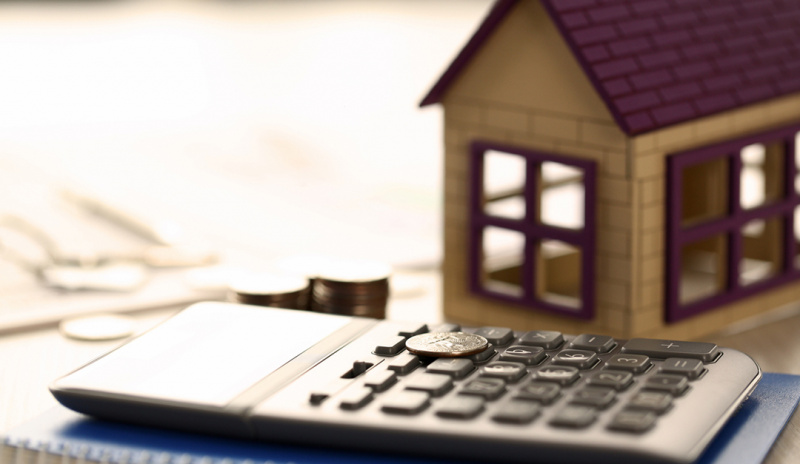Market Reports Show Pandemic Has Slowed Home Sales, But Values Stay Strong

After a hopeful February, March homes sales were weak, while other sectors continue to grow, according to several reports. The National Association of REALTORS® (NAR) reported this week that March's adjusted annualized rate of existing-home sales totaled 5.27 million, an 8 percent decrease from last month; still, YoY sales climbed 0.8 percent.
A report from Meyers Research, backed by data from Zonda and Metrostudy, showed new home sales fell by 33.1 percent since last month.
"March is historically a better month than February for new home sales but COVID-19 turned that trend on its head, in part because of record-breaking job losses," said Ali Wolf, chief economist at Meyers Research. "Uncertainty and fear are powerful forces."
Across all house types (single-family, condo, co-op and townhome), the median price was $280,600—an 8 percent increase year-over-year, according to NAR. The median price for sales in the single-family space was $282,500, while the condo median was $263,400.
The Radian Home Price Index reported a slightly more conservative figure, with median prices across all housing types coming in at $252,597.
By region, according to NAR:
Midwest
Existing-Home Sales: 1.25 million (+4.2% YoY)
Median Price: $2219,700 (+9.7% YoY)
Northeast
Existing-Home Sales: 650,000 (-7.1% YoY)
Median Price: $300,400 (+8.3% YoY)
South
Existing-Home Sales: 2.29 million (-9.1% YoY)
Median Price: $245,000 (+7.5% YoY)
West
Existing-Home Sales: 1.08 million (-13.6% YoY)
Median Price: $420,600 (+8.0% YoY)
In particular, the West and South had the best regional performances in terms of home values, according to Meyers Research—a stark contrast to the plunge of existing home sales.
The Meyers Research report also shows that Houston, San Francisco and Los Angeles had the largest drops in pending new home sales over the last month, citing a battered energy sector, shelter-in-place mandates and job losses as the primary drivers for the dip.
"Unfortunately, we knew home sales would wane in March due to the coronavirus outbreak," said Lawrence Yun, NAR's chief economist. "More temporary interruptions to home sales should be expected in the next couple of months, though home prices will still likely rise."
According to the Radian Home Price Index, home prices across the U.S. rose by 5.8 percent since February despite the spread of COVID-19. The index uses over 70 million unique addresses each month in its calculations.
"U.S. housing values remained well supported in the early days of the COVID-19 pandemic. While that could change going forward, data indicates that the impact may vary significantly by region and locality," said Steve Gaenzler, senior vice president of data and analytics at Radian.
Currently, inventory is at a 3.4-month supply, NAR data shows. In March, the average existing-home listing was on the market for 29 days, seven days less than the previous year. Of March homes sold, 52 percent were on the market for less than one month.
Of March's adjusted annualized rate of sales, 4.74 million were single-family, while condo and co-op sales totaled 530,000, says NAR. Nineteen percent of sales were all-cash, and 13 percent by individual investors or second homebuyers. Three percent were distressed, up from 2 percent in February.
"Earlier in the year, we watched inventory gradually tick upward but with the current quarantine recommendations in place, fewer sellers are listing homes, which will limit buyer choices," Yun said. "Significantly more listings are needed, and more will come on to the market once the economy steadily reopens."
"We have seen an increase in virtual home tours, e-signings and other innovative and secure methods that comply with social distancing directives," Malta continued. "I am confident that REALTORS® and brokerages will adapt, evolve and fight, ensuring the real estate industry will be at the forefront of our nation's upcoming economic recovery."
Bill Banfield, Quicken Loans executive vice president of capital markets, offered the following insights into the NAR report:
"Social distancing is only just beginning to show up in home sales data. The March closing activity is reflective of contracts signed in the weeks prior to stay-at-home orders taking full effect. Potential home buyers have stayed indoors, halting their home search to stay healthy," said Banfield. "In April, most states had month-long social distancing orders in effect, and we will see the full impact on home sales. The housing market will stay on pause while Americans work together to stop the spread of COVID-19, but it is likely to return to the high levels of activity once we are passed this current challenge."
Liz Dominguez is RISMedia's senior editor. Email her your story ideas to ldominguez@rismedia.com.
A report from Meyers Research, backed by data from Zonda and Metrostudy, showed new home sales fell by 33.1 percent since last month.
"March is historically a better month than February for new home sales but COVID-19 turned that trend on its head, in part because of record-breaking job losses," said Ali Wolf, chief economist at Meyers Research. "Uncertainty and fear are powerful forces."
Across all house types (single-family, condo, co-op and townhome), the median price was $280,600—an 8 percent increase year-over-year, according to NAR. The median price for sales in the single-family space was $282,500, while the condo median was $263,400.
The Radian Home Price Index reported a slightly more conservative figure, with median prices across all housing types coming in at $252,597.
By region, according to NAR:
Midwest
Existing-Home Sales: 1.25 million (+4.2% YoY)
Median Price: $2219,700 (+9.7% YoY)
Northeast
Existing-Home Sales: 650,000 (-7.1% YoY)
Median Price: $300,400 (+8.3% YoY)
South
Existing-Home Sales: 2.29 million (-9.1% YoY)
Median Price: $245,000 (+7.5% YoY)
West
Existing-Home Sales: 1.08 million (-13.6% YoY)
Median Price: $420,600 (+8.0% YoY)
In particular, the West and South had the best regional performances in terms of home values, according to Meyers Research—a stark contrast to the plunge of existing home sales.
The Meyers Research report also shows that Houston, San Francisco and Los Angeles had the largest drops in pending new home sales over the last month, citing a battered energy sector, shelter-in-place mandates and job losses as the primary drivers for the dip.
"Unfortunately, we knew home sales would wane in March due to the coronavirus outbreak," said Lawrence Yun, NAR's chief economist. "More temporary interruptions to home sales should be expected in the next couple of months, though home prices will still likely rise."
According to the Radian Home Price Index, home prices across the U.S. rose by 5.8 percent since February despite the spread of COVID-19. The index uses over 70 million unique addresses each month in its calculations.
"U.S. housing values remained well supported in the early days of the COVID-19 pandemic. While that could change going forward, data indicates that the impact may vary significantly by region and locality," said Steve Gaenzler, senior vice president of data and analytics at Radian.
Currently, inventory is at a 3.4-month supply, NAR data shows. In March, the average existing-home listing was on the market for 29 days, seven days less than the previous year. Of March homes sold, 52 percent were on the market for less than one month.
Of March's adjusted annualized rate of sales, 4.74 million were single-family, while condo and co-op sales totaled 530,000, says NAR. Nineteen percent of sales were all-cash, and 13 percent by individual investors or second homebuyers. Three percent were distressed, up from 2 percent in February.
"Earlier in the year, we watched inventory gradually tick upward but with the current quarantine recommendations in place, fewer sellers are listing homes, which will limit buyer choices," Yun said. "Significantly more listings are needed, and more will come on to the market once the economy steadily reopens."
"It is NAR's top priority to continue to aid and assist REALTORS® during these unpredicted, trying times," said NAR President Vince Malta. "We have played an instrumental role on Capitol Hill as Congress secured multiple federal relief packages, and we will continue fighting on behalf of our 1.4 million members, American consumers and the nation's economy as these conversations persist."
"We have seen an increase in virtual home tours, e-signings and other innovative and secure methods that comply with social distancing directives," Malta continued. "I am confident that REALTORS® and brokerages will adapt, evolve and fight, ensuring the real estate industry will be at the forefront of our nation's upcoming economic recovery."
Bill Banfield, Quicken Loans executive vice president of capital markets, offered the following insights into the NAR report:
"Social distancing is only just beginning to show up in home sales data. The March closing activity is reflective of contracts signed in the weeks prior to stay-at-home orders taking full effect. Potential home buyers have stayed indoors, halting their home search to stay healthy," said Banfield. "In April, most states had month-long social distancing orders in effect, and we will see the full impact on home sales. The housing market will stay on pause while Americans work together to stop the spread of COVID-19, but it is likely to return to the high levels of activity once we are passed this current challenge."
Liz Dominguez is RISMedia's senior editor. Email her your story ideas to ldominguez@rismedia.com.


